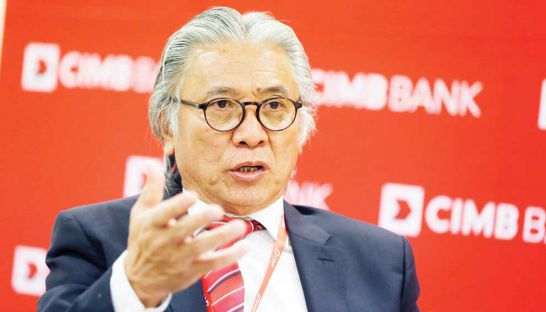Tapping into lending growth
Tapping into lending growth
For years, the Malaysian-based CIMB Group has been tapping into high-growth markets in ASEAN with a strategy of full regional expansion. The Post’s Kali Kotoski spoke with Bun Yin, CEO of CIMB Bank Plc in Cambodia, about the bank’s operations and the Kingdom’s potential.

How has CIMB expanded its operations in Cambodia and regionally?
In six years, we have expanded from two branches to 12 branches as well as 14 off-site self-service terminals. We presently have over $450 million in assets, making us the 13th largest commercial bank in Cambodia. We intend to be in Cambodia for the long term and we feel it is important to grow sustainably and to invest in developing our local talent pool. Regionally, CIMB Group is ASEAN’s fifth-largest universal bank. Over the past decade, the group has been one of the fastest-growing banks in the region.
What is CIMB’s target market for financial services in Cambodia?
In Cambodia, we focus largely on consumer and commercial banking, especially on medium-d enterprises. The bank has a plan for small- and medium-d enterprise (SME) lending and it is growing, but what we find difficult in Cambodia is that each bank classifies SMEs differently and they have different lending practices.
Is there room for growth in financial services?
We see tremendous growth opportunity in financial services in Cambodia. Various studies indicate that banking penetration is around 20 percent of the population. It is remarkable that more Cambodians have Facebook accounts, with around 30 percent penetration, than bank accounts. A lot of local banks are still underbanking clients and lending products are still very traditional by relying on loans and deposits. So in the future, we hope we can introduce more products.
How important is it for Cambodians to become financially literate when choosing lending options?
We believe it’s very important for Cambodians to enhance their financial literacy to understand the implications of loan repayments compared to income levels. We see opportunities to introduce more sophisticated financial solutions such as flexible mortgages, structured deposits that are commodity-linked investments and wealth management products once financial literacy picks up.
Do you expect Cambodia’s rapid credit growth to continue?
If we look at bank loans in countries like Thailand and Vietnam, it is in the range of 110 to 120 percent of total GDP, while Cambodia is still at 63 percent. So we believe that there is still a lot of capacity for credit growth in the long term compared to neighbouring countries. The issue is whether banks can obtain the deposits they need to keep lending. For example, the industry loan-to-deposit ratio is currently above 100 percent today in Cambodia and loan growth is still faster than deposits growth. And we can expect that gap to continue to widen. Meanwhile, CIMB’s own loan-to-deposit ratio is well below the average, with about 70 percent if we include interbank deposits and 80 percent if we only take into account customer deposits.
How challenging is it to meet the central bank’s new regulation that requires lenders to have a minimum 10 percent of their loan portfolio in riel?
To achieve the 10 percent local currency loan target in three years, banks have to think of ways to attract riel deposits. Having said that, NBC has recently come up with a series of instruments to promote riel liquidity, but these are very much in the early stages. There is still a challenge because many people have become so familiar with the US dollar over a long period and it will not be easy to migrate to riel. However, I believe the NBC is realistic about this and it is clear from their recent announcement that they want to take things gradually and allow banks time to adapt.













